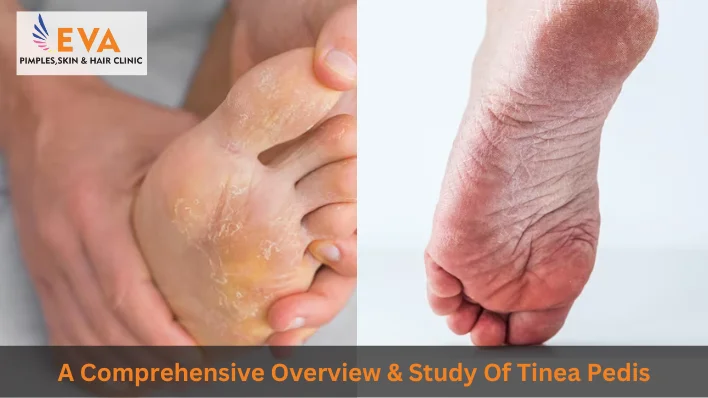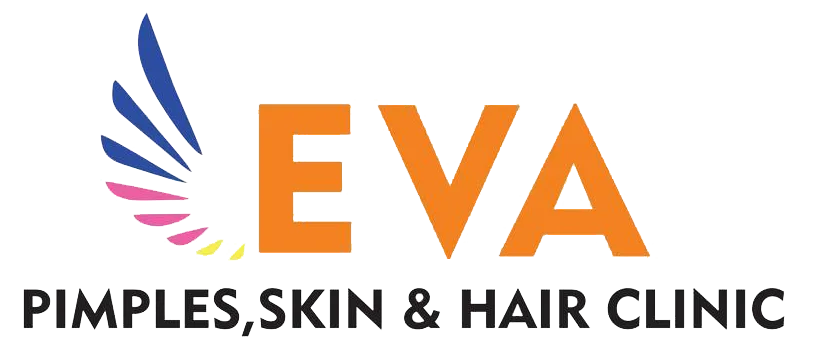A Comprehensive Overview & Study Of Tinea Pedis
Home | Blogs | A Comprehensive Overview & Study Of Tinea Pedis


If you observe an infection of the feet which tends to affect the soles, interdigital clefts of toes, and nails, then chances are that you might be having some sort of fungal infection known as Tinea Pedis. So, if you’re suffering from Tinea Pedis condition, then worry not as you’re not alone! Going by the study, almost 10% of the population suffers from this plaguing and disturbing condition!
Key Topics Discussed in This Article
What is Tinea Pedis Disease?
Tinea Pedis are basically foot infections caused owing to a dermatophyte fungus, growing vigorously in warm humid weather conditions. Athlete’s foot/Tinea Pedis are most commonly noticed in young adult men. In fact, the most common term for Tinea Pedis is Athlete’s foot or ringworm of the foot-a condition in which fungus grows on or in the skin’s top layer.
Tinea Pedis is actually an outcome of the following fungus: Trichophyton rubrum, Trichophyton interdigitale and Epidermophyton floccosum. Occasionally, agents that include Tinea Pedis are Tricholosporum violaceum. But T. rubrum fungus is most commonly visible in more than 70% of patients affected by Tinea Pedis.
Where is Tinea Pedis found?
It occurs mainly by Trichophyton rubrum-a dermatophyte infection initially endemic only to a small region of Southeast Asia as well as parts of Africa and Australia.
How one gets Tinea Pedis?
The athlete’s foot appears as a condition when the tinea fungus starts growing on the feet of an infected person, or by touching surface areas contaminated with fungus. The fungus thrives in warm and moist environmental conditions, and is most commonly found in showers, on locker room floors, as well as around swimming pools.
People who’re at Risk of Developing Tinea Pedis
Anyone prone to get athlete’s foot, but certain behaviors make you more prone to the risk factors, landing you up in increasing risk for developing athlete’s foot, which’re as follows:
- People giving frequent visits to public places barefoot, especially the locker rooms, common showers, and swimming pools.
- Some people have the habit or tendency to share their socks, shoes and towels, and are generally at a higher risk of getting Tinea Pedis.
- Wearing tight-fitting or closed-toe shoes result in sweating thereby leading to fungal infection i.e. Tinea Pedis.
- Keeping one’s feet wet and moist for a longer duration of time will make him/her prone to fungal infection.
- Sweaty feet can also lead to fungal infection.
- On some occasions, those suffering from a minor skin or nail injury on foot, tends to get a fungal infection.
Avail treatment for Tinea Pedis at Eva Pimples, Skin & Hair Clinic, Pune in consultation with certified, experienced dermatologists and keep your worries at bay!
Symptoms of Tinea Pedis
- Itching, stinging & burning sensations between the toes
- Itching, stinging & burning feeling on the soles of the feet
- Blisters on the feet that itch
- If one’s experiencing cracking and peeling of the skin on the feet, most commonly visible in between the toes & on the soles
- Dry, flaky skin on the soles or sides of the feet
- Raw skin on the feet
- Discoloured, thick, and crumbly toenails
- Toenails pulling away from the nailbed
Diagnosis of Athlete’s Foot/Tinea Pedis:
Certified, experienced dermatologist like the one at Eva Skin Clinic, Pune, will examine you physically, asking you about the signs and symptoms of foot that you might be experiencing, including past medical history, as well as enquire about the same lesion you might be having in another part of the body.
Probable Complications:
- Cellulitis
- Pyoderma
- Lymphangitis
- Osteomyelitis
Treatment Options for Tinea Pedis:
- Antifungal products available over-the-counter & by adding some basic good hygiene habits.
- Antifungal creams & ointments, powders, and sprays for managing and regulating infection and continuing the treatment for some time even after the rashes have disappeared to prevent it from relapse or recurring.
- Important to remember that Tinea Pedis might turn out to be severe and stubborn if not treated promptly and properly. Even treated with antifungal medications, the infection may take some weeks to clear and cure completely with chances of recurring even after its disappearance.
Care Needed to be Taken for Tinea Pedis:
- Once knowing the hard-hitting fact that you’ve Tinea Pedis, wash each and every clothes in warm water to ward off fungal infection any further.
- Maintain foot hygiene.
- Avoid walking barefoot.
- Suggested to dry toes thoroughly and properly post bathing.
- Keep your toes and feet always dry so to avoid moist and humid conditions.
- Apply dusting powder like clotrimazole powder.
- Use plain talc or talcum powder and do dusting on a regular basis for keeping your shoes and socks dry.
- Use medicated cream or ointment as per your doctor’s instructions.
- Minimize using a shower room and swimming pool, but if you still want to go there, make sure to keep your feet dry and apply antifungal talc.
- If you’re suffering from diabetes, then you need to take extra care as in some cases, it might lead and progress to onychomycosis.
Preventive Measures Of Recurrent Foot Infections:
- Wash feet twice a day with soap, drying them completely especially in between your toes.
- Wash socks regularly at a higher temperature.
- Apply antifungal powder on your feet on a daily basis.
- Whilst using the public shower and walking on the side of the swimming pool, always make sure to wear flat sandals so to prevent moist and humid foot conditions.
- Don’t share socks, shoes or towels with anyone.
- Wear socks having breathable fibers such as cotton, wool and synthetic fiber.
- Keep 2 shoes and wear each one on alternate days.
- Always make it a point to keep shoes and socks clean daily, and change your socks regularly, washing them for sure.
- Change socks when your feet get sweaty and moist.
Get the best-in-class Tinea Pedis treatment at Eva Pimples, Skin & Hair Clinic in Wakad & Hinjewadi, Pune India and get rid of all kinds of skin and hair-related problems! Eva Skin & Hair Clinic offers treatment for Tinea Pedis, Puffy Eyes, Acne Pustules, Smoker’s Black Lips, Laser Hair Removal Treatment, Acne Pigmentation, Pimples, Dark Spots, Dark Eyelids, Uneven Skin Tone, having more than 11 years of experience in the field of Dermatology, Aesthetic Cosmetology & Trichology, Hair Transplant (fue) surgery.


